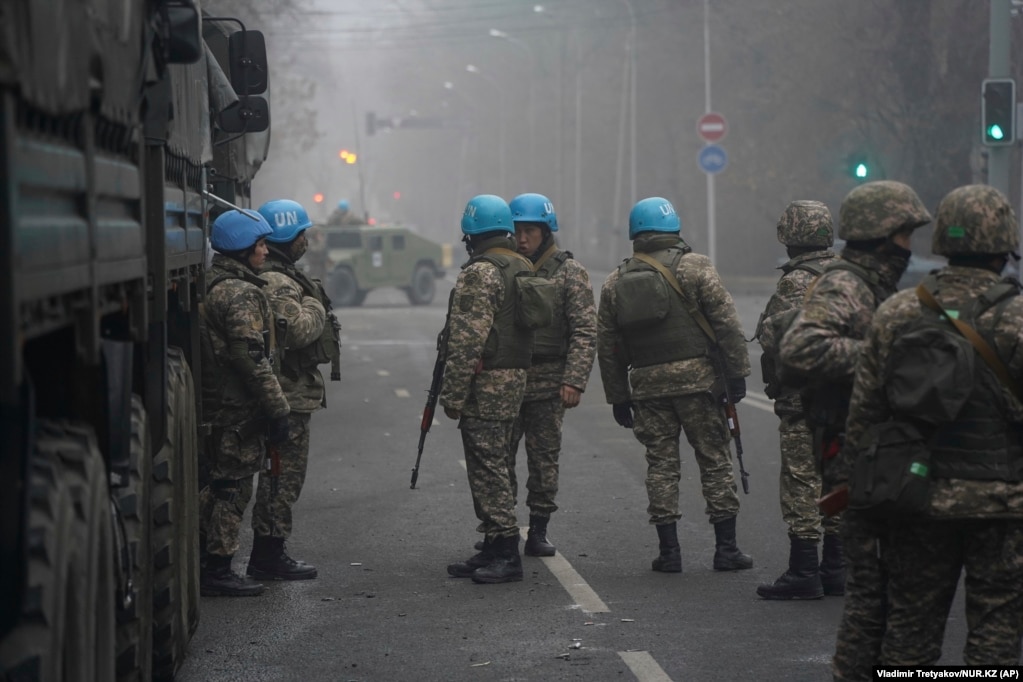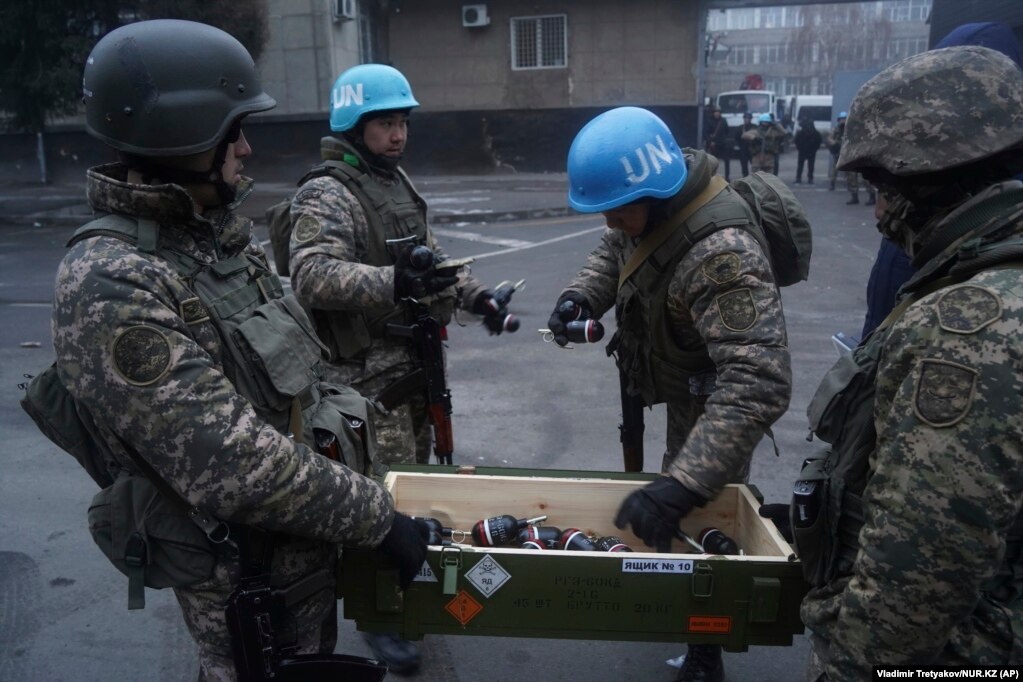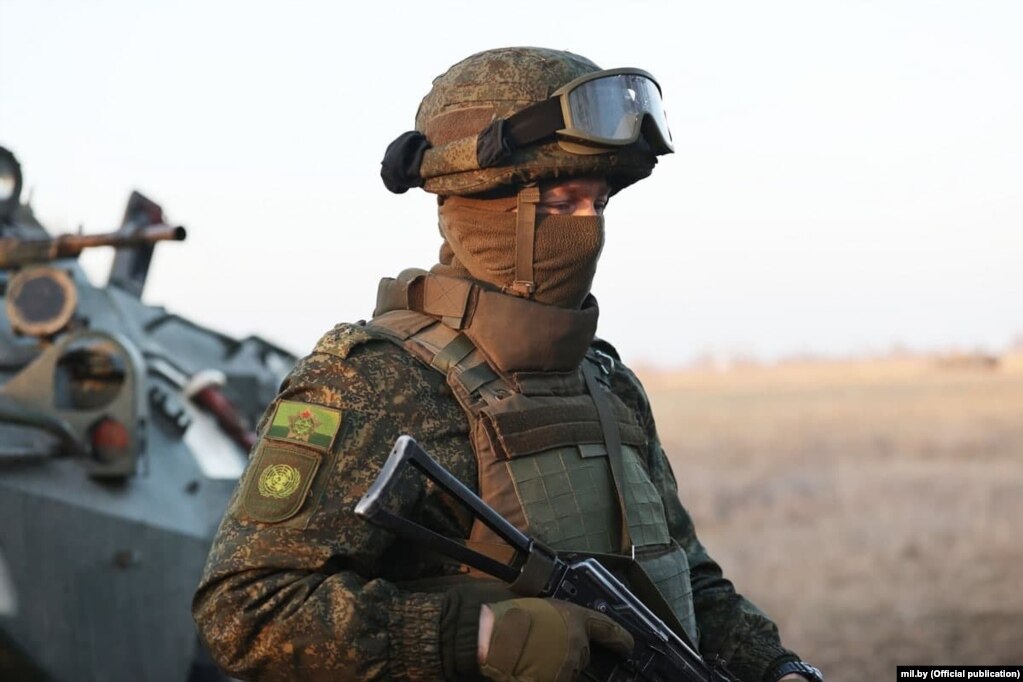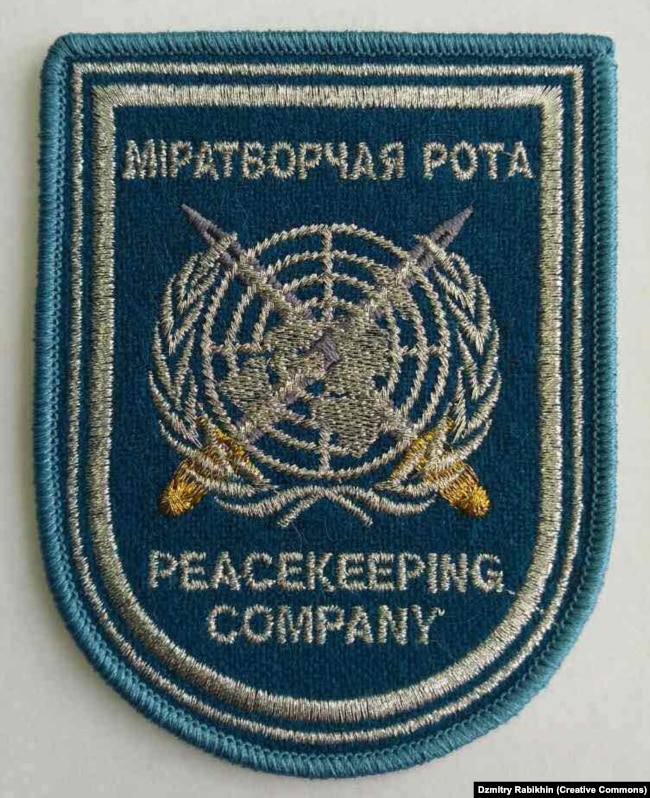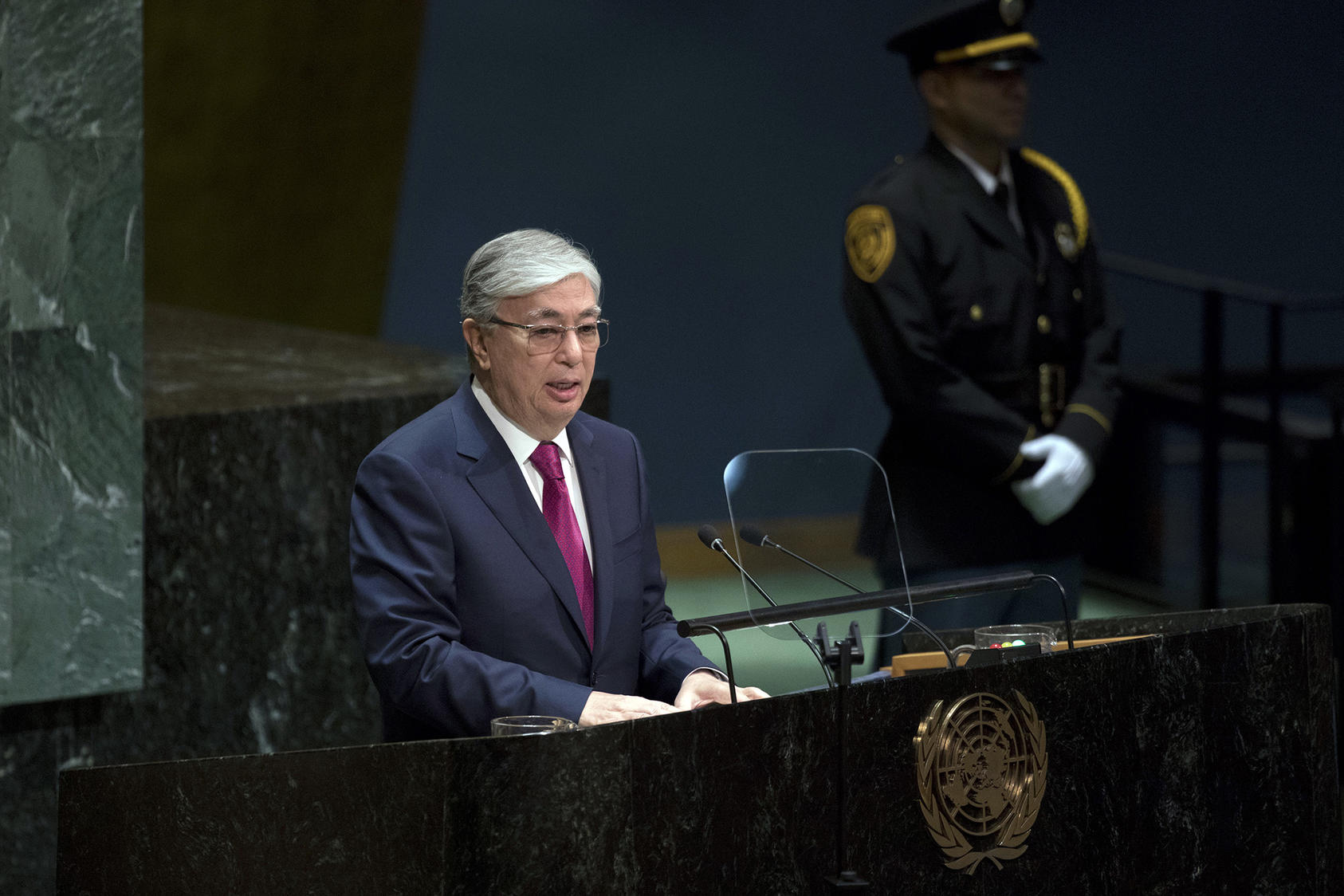To Help Central Asia, Engage with Muslim Civil Society
Kazakhstan’s violence emphasizes the relevance of often overlooked communities.
Kazakhstan’s violent upheaval this month underscores that governments and international organizations need to more effectively help Central Asia’s 76 million people build responsive, effective governance across their five nations. Mass protests or communal violence also have struck Uzbekistan, Kyrgyzstan and Tajikistan in recent years. As the United States, allied governments and international institutions seek ways to promote nonviolent transitions toward more stable, democratic rule, new research suggests that they explore for partners in an often-ignored sector—Central Asia’s active and disparate Muslim civil society.
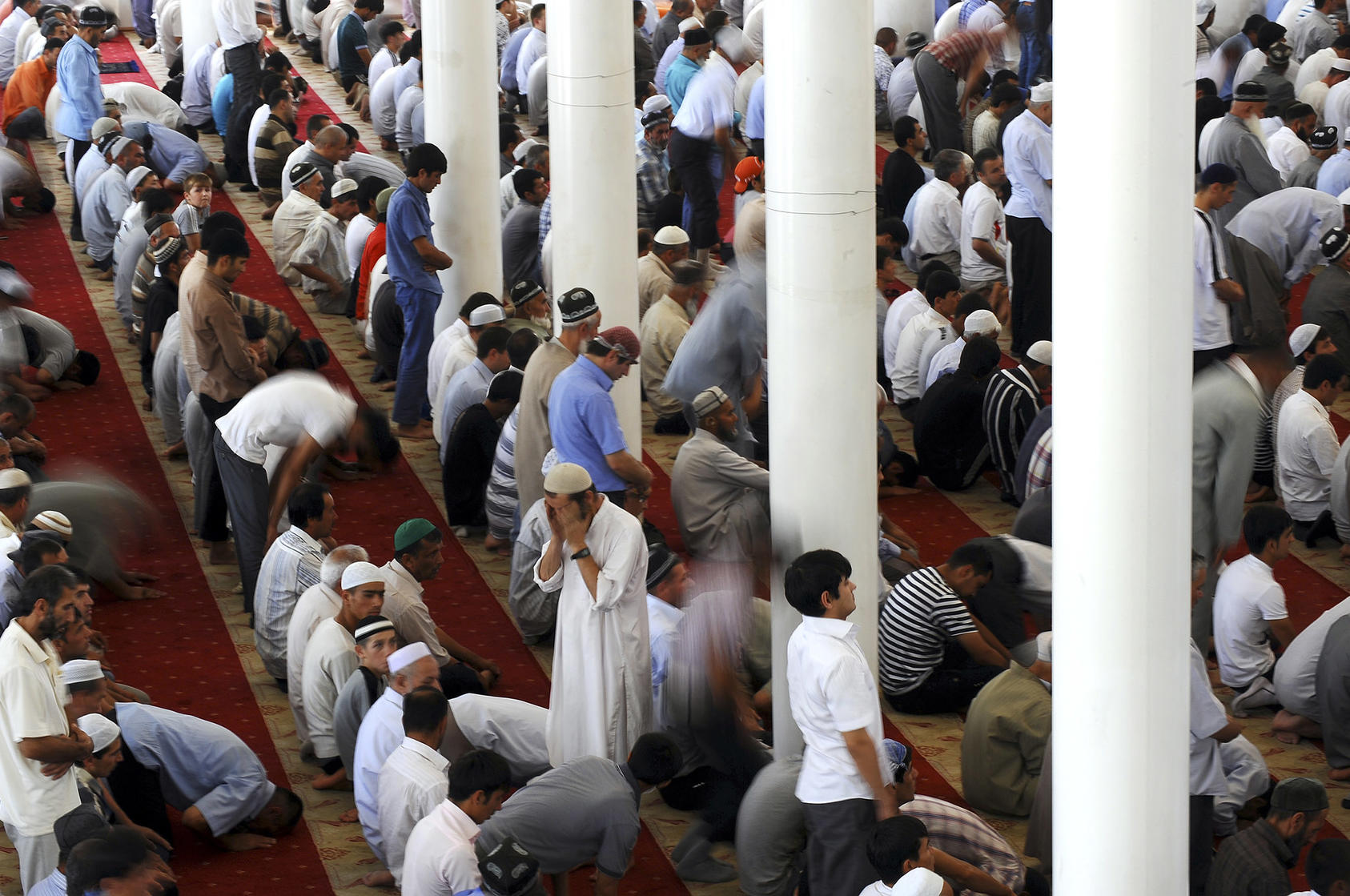
Organizations working to build democracy and peace abroad increasingly recognize an imperative to work with local civil society in nations facing violent conflict. In any country, what we call “civil society”—a landscape of community organizations, social movements and other groups independent of governments and business—offers well-rooted, effective partners for nonviolent work to heal divides between governments and the governed. Still, habit and human nature lead us to seek our partnerships primarily among those parts of civil society that look most familiar. For many, this means secular groups that seem to reflect Western or international norms.
Yet Central Asia’s civil societies, as across the Muslim world, are rooted significantly in Islamic religious identities that tend to discourage Western and international organizations from constructively engaging them, says Sebastien Peyrouse, co-author of a new study of Muslim civil society across four of the five Central Asian nations. In Islamic countries of the Middle East, international organizations have partly overcome this barrier through years of exploration to find and engage strong partners within Muslim civil society. But not yet in Central Asia, Peyrouse stressed in an interview.
“The current upheaval in Kazakhstan reflects a broad crisis of government legitimacy that puts at risk the stability of an entire region,” Peyrouse said. “An important way for the international community to do better in helping build the effectiveness and legitimacy of Central Asia’s states is to reach out more broadly than we have so far to understand and work with Muslim civil society.”
After 30 Years, Eroded Hopes
The collapse of the Soviet Union exactly 30 years ago was driven by popular demands for change expressed via a nascent civil society in Soviet Europe. Those pressures and civil society groups were mainly nonexistent in Soviet Central Asia. Since then, the five ex-Soviet Central Asian states have been ruled largely through Soviet-style bureaucracies controlled by authoritarian rulers and their cronies. A generation of systemic corruption, organized crime, rising inequalities between rich and poor, and widening poverty has corroded people’s early hopes for better lives following Soviet rule.
Across the region, “people spoke optimistically of their future in the early years after their independence,” said Peyrouse. But increasingly over the past decade, “when you travel and talk to people, especially outside the capital cities, you hear them say that their governments are corrupt and not interested in meeting the population’s needs.”
These frustrations have led to a rise in ethnic nationalisms and violent conflict, USIP Central Asia specialist Gavin Helf has noted. Kazakhstan’s current turmoil is only the latest in a long series of violent upheavals that have killed thousands and displaced hundreds of thousands across the region in the past decade.
While authoritarian regimes have dominated Central Asia for a generation, they have had to legitimize themselves as defenders of national identities that are rooted partly in Islamic faith and tradition. This bedrock political reality has preserved varied degrees of political and cultural space for Muslim institutions—mosques, charitable foundations, neighborhood groups and others. At the same time, Central Asian governments monitor and constrict the activities of such religious-based groups out of deep fears of any manifestations of politicized Islam that could challenge the governments’ claims to power and legitimacy.
These disparate Muslim civil society organizations tend to be well rooted in their communities and thus to hold significant margins of popular legitimacy and potential influence, according to a new research report by Peyrouse and Emil Nasritdinov, an anthropology professor at the American University of Central Asia in Kyrgyzstan.
Too Diverse to Label
The research project, funded by USIP, interviewed dozens of participants in Muslim civil society organizations across Kazakhstan, Uzbekistan, Kyrgyzstan and Tajikistan. The research, still underway, provides a preliminary assessment that can help governments and donor organizations consider ways to build more effective partnerships for peacebuilding, development or pro-democracy efforts in Central Asia.
A first basic conclusion of the research report is that—contrary to a common view of Muslim civil society as “a homogeneous group of organizations focused mainly on religion,” Central Asia’s Muslim civil society groups are too diverse even to be easily labeled. They vary in their “objectives, working methods, attitudes toward and relations with government, opinions about the international community, and views on national and foreign policy” the study says. Notably, the groups reached in the research “expressed a generally positive view of the United States and an openness to working with U.S. structures, even if at the same time they criticized specific U.S. policies and actions.” Many of the participants interviewed said their groups could help their communities prevent radicalization of residents by Islamic extremist groups, “particularly by promoting moderate messages, strengthening education” and addressing local grievances.
While some Muslim civil society organizations “may be connected to some dangerous Islamist groups, if we want to have a role in development in Central Asia, we need to … go beyond the assumption that all [Muslim groups] are connected to Islamism or to political agendas,” said Peyrouse. “Getting to know them is how we learn which ones could be dangerous and which not.”
The Muslim civil society representatives “tended to focus more than [their secular counterparts] … on contributing to local development and social welfare rather than on holding governments accountable or promoting global issues such as democratization and human rights,” the report found. While some of the Muslim groups’ representatives expressed support for changes such as gender equality, “more appeared to reflect a rising tide of conservativism in Central Asian societies,” it said.
Possible Partners for Peacebuilding
The study identifies six broad types of organizations and urges further investigation to determine where international efforts might work with them:
- Muftiates, or national religious hierarchies, are formally independent of, but generally cooperative with, the government. Some conduct philanthropic work. The muftiate in Kyrgyzstan buttressed the government’s response to COVID by offering religious schools as care centers with more than 1,400 beds.
- Mosques of varied stripes serve not only as prayer venues, but as community discussion spaces and religious schools for young children. They are local—and in many places, primary—distributors of charity to the needy.
- Mahallas (urban religious jurisdictions that traditionally include religious functions) play disparate roles. In Uzbekistan they perform government-sanctioned neighborhood administrative functions. Elsewhere, they may independently finance mosques or organize social events.
- Jamaats (meaning simply “groups” or “associations”) are of disparate types, including Islamic movements, some of which preach and proselytize in communities, and some of which are funded from abroad.
- Islamic charitable foundations may be local or affiliated with international networks, and may distribute necessities to the poor, fund educational programs or finance the building of mosques, among other activities.
- Islamic nongovernmental organizations “may be the most diverse” type of Muslim civil society groups “run[ning] the gamut from official to semiofficial to underground,” and from local to national or international. Their operations range “from a few individuals working from their homes to offices with dozens of people.”
The study recommended that the United States, its allies, and development and assistance organizations should examine the diversity of Muslim civil society organizations and their roles, and should engage with them on issues “such as local economic and social development, fighting domestic violence, community stabilization, and countering violent extremism.” Also, international actors should more actively press Central Asia’s governments to open more space for activities by civil society, including its Muslim-oriented sectors.
In 1992, the Soviet Union’s collapse suddenly created 15 nations, from the Baltic Sea to Asia, as potential partners for American engagement. In Central Asia, the United States offered immediate recognition only to Kazakhstan, which had inherited Soviet nuclear weapons, and to Kyrgyzstan, which was seen as committed to liberal reforms. Its hesitation in engaging fully risked weakening its influence in a region where Iran, China and Russia are formidable competitors for influence. Thirty years later, Central Asia is, if anything, more fragile. So, the hesitation of that first diplomacy should this time be reversed to deepen America’s engagement with the broadest possible range of responsible and effective Central Asian partners.



